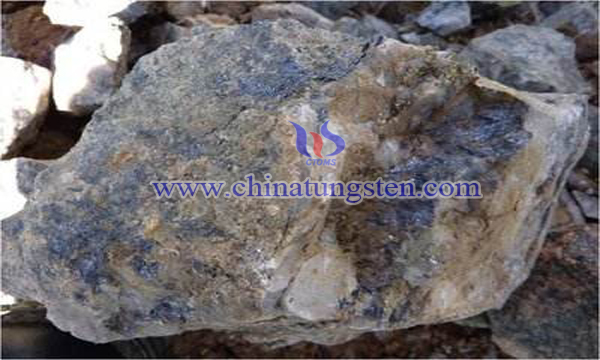High-Efficiency Method for Separating Tungsten and Molybdenum
- Details
- Category: Tungsten Information
- Published on Wednesday, 01 August 2018 17:38
With the continuous exploitation of high-quality tungsten-molybdenum ore resources, complex tungsten-molybdenum symbiotic mineral resources are gradually being consumed. However, the impurity content in tungsten product or molybdenum product seriously affects its performance. The most difficult impurity element to remove from tungsten products is molybdenum, while for molybdenum products, tungsten is the most difficult to separate. In order to improve the performance of tungsten and molybdenum products, separation of tungsten and molybdenum is necessary. Therefore, in order to efficiently utilize these tungsten-molybdenum symbiotic mineral resources, the separation of tungsten and molybdenum is the key.

However, the extremely similar chemical properties of tungsten and molybdenum make tungsten and molybdenum difficult to separate and become a technical problem that plagues tungsten-molybdenum metallurgy. Some scholars provide a high-efficiency method for separating tungsten and molybdenum, which is especially suitable for treating high concentration tungsten-molybdenum mixture solution. The separated tungsten or molybdenum can be directly used for the preparation of the respective products, which has a good separation effect, a simple process.
The brief process is as follows:
1) Add acid to the tungsten-molybdenum mixed solution to adjust the pH to 1-3, so that tungsten and molybdenum respectively form a precipitate of tungstic acid and molybdic acid, then they are washed by filtration to obtain a mixed precipitate of tungstic acid and molybdic acid;
2) Add hydrogen peroxide to the mixture precipitate, acid is added at the same time, then stir the reaction vessel to form a mixture solution of peroxytungstic acid and peroxolybdic acid;
3) Control the temperature of the mixture obtained in the step 2 to be 25 to 80 ° C, add tungsten powder to precipitate tungsten as tungstic acid; filter the solution to obtain a tungstic acid precipitate and an acidic solution containing molybdenum;
4) The obtained tungstic acid precipitate is washed and calcined to prepare tungsten trioxide, or dissolved in ammonia water to obtain an ammonium tungstate (APT) solution, and then APT is prepared by evaporation crystallization;
5) Extract molybdenum in the obtained molybdenum-containing acidic solution by using an extracting agent/ion exchange resin, and returning the raffinate/post-liquid to the mixed solution used in the step 1 or the step 2;
6) A stripping is carried out to the organic phase/resin containing molybdenum with ammonia water to obtain an ammonium molybdate solution, and after acid precipitation, ammonium tetramolybdate is obtained.
The tungsten or molybdenum separated by this method for separating tungsten and molybdenum can reach the China’s national standard 0, and the prepared tungsten or molybdenum can be directly used for the preparation of the respective products. This method has a simple process and easy to control, and can to be applied in industrialization.
- APT Manufacturer & Supplier, Chinatungsten Online: ammonium-paratungstate.com
- Tungsten News & Prices of China Tungsten Industry Association: www.ctia.com.cn
- Molybdenum News & Price: news.molybdenum.com.cn
- Tel.: 86 592 5129696; Fax: 86 592 5129797; Email: sales@chinatungsten.com



 sales@chinatungsten.com
sales@chinatungsten.com